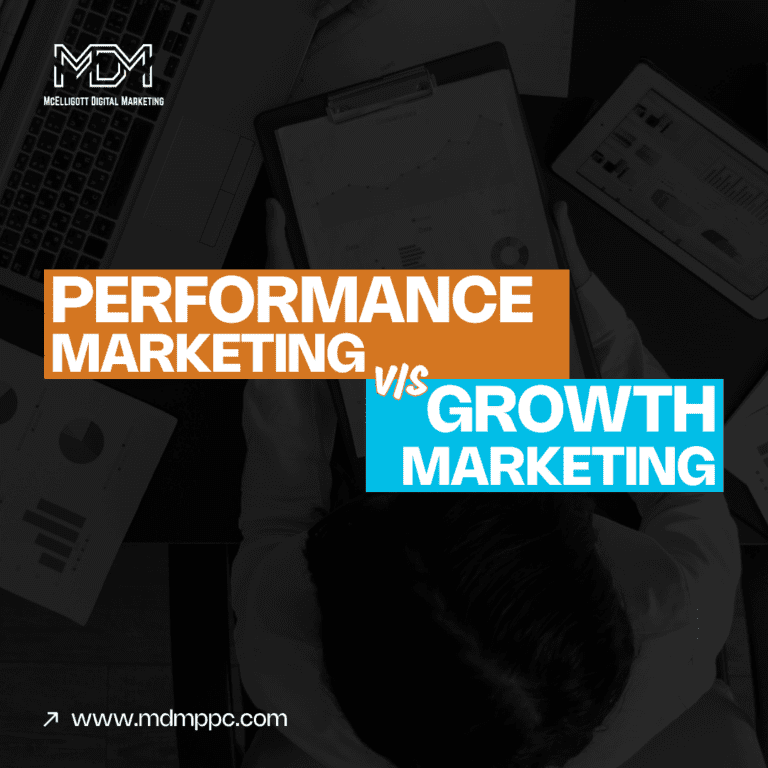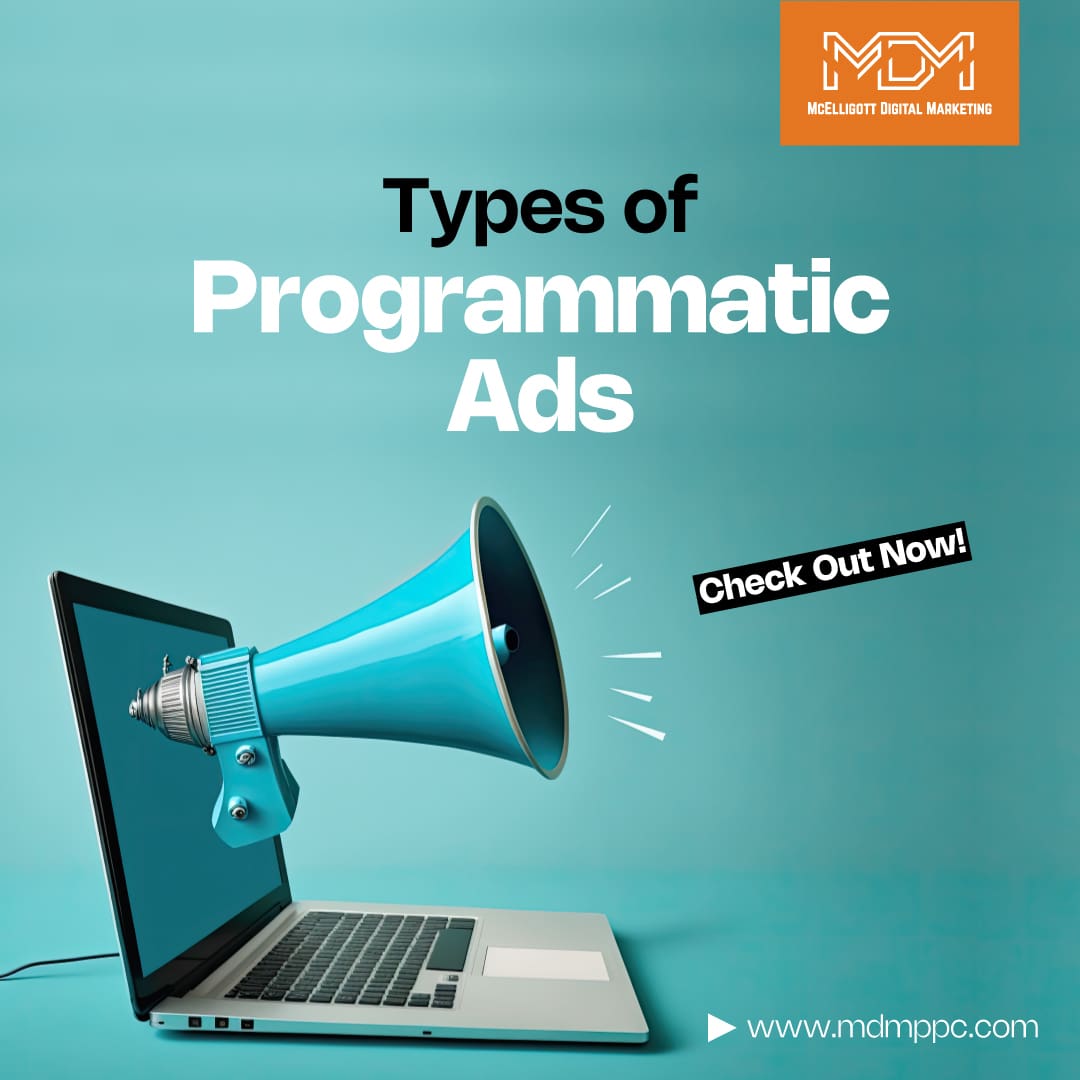While looking for marketing strategies for your business, you must have come across growth and performance marketing terms. Though they may sound related, with the aim of good performance for your company’s growth, they are different.
Understanding growth marketing vs performance marketing will help you choose the one or both that aligns with your business goals. In this article, you’ll learn about growth marketing vs performance marketing, and which approach you should invest in for the best return: growth marketing or performance marketing.
What is growth marketing?
Growth marketing is a marketing optimization strategy that focuses on growing a business by building customer loyalty rather than just promoting a product. In growth marketing, strategies like A/B testing, email marketing, SEO, and data analysis are used to create more effective growth campaigns.
Rather than depending on long-term efforts, growth marketing speeds up innovation through just-in-time (JIT) and micro-campaigns that address current needs.
Each campaign’s results provide valuable information about:
- Your main user demographics.
- The problems your users are facing, and what they are willing to pay for solutions.
- How often do users look for or buy your product?
Growth in the context of ‘growth marketing’ can mean attracting more people, increasing ROI, or increasing brand recognition. The key to successful growth marketing is to start small, identify the most effective strategies using data, and then allocate your marketing budget to the best-performing channels.
If we try to understand growth marketing, in comparison to traditional marketing, it can be quite easier. Traditional marketing methods like building brand awareness, driving traffic, and generating leads focus mainly on the top of the funnel. But growth marketing covers the whole funnel.
Growth marketers work on every stage- awareness, acquisition, activation, retention, referral, and revenue (AARRR)- spanning everything from generating leads to retaining customers.
How does growth marketing work?
This is our method for growth marketing, using data to improve each step of the customer journey.
- We begin by establishing distinct goals for growth, like boosting user acquisition, prioritizing customer retention, or enhancing ROI.
- We analyze data to understand customer demographics, preferences, and behaviors and execute search engine optimization strategies.
- A/B testing involves testing various versions of web pages to find out which one performs better.
- We cater to every phase of the customer journey, from awareness to revenue, known as AARRR.
- It is then followed by analyzing campaign results to determine what is effective and what is not and making adjustments promptly.
- We utilize knowledge acquired to modify strategies and expand effective tactics, concentrating on channels that produce optimal outcomes.
Examples of growth marketing
Here are examples of successful growth marketing strategies.
1. Dropbox
Dropbox launched the “Refer a Friend” program, rewarding users who invited their friends to join.
Dropbox quickly gained a large user base and became a global leader in cloud storage. The program worked well because as more people joined, the platform became more valuable, and created a low-cost way to attract new customers.
2. Uber
Uber introduced Surge Pricing, which adjusts fares based on demand.
As a result, the traditional taxi industry was disrupted and Uber became a global cab rental service. Surge pricing effectively matched supply with demand, ensuring rides were readily available and it helped drivers earn more during busy times.
3. Airbnb
Airbnb partnered with airlines and travel agencies to promote its listings.
This strategy helped Airbnb become a top choice for alternative accommodations, and the business competed directly with hotels. Airbnb got a broader audience from the partnerships and made the booking process easier for travelers.
4. Hotmail
Hotmail launched a viral marketing strategy by adding “Get Hotmail” to every email sent by its users. This simple tactic led to fast growth in its user base, making Hotmail one of the first popular email services. The strategy worked by increasing awareness through existing email networks.
5. WhatsApp
The “Invite Friends” feature of WhatsApp is easily integrated with users’ contact lists. The easy-to-use interface made inviting friends easy and quick and increased user adoption.
What is performance marketing?
In performance marketing, we create a custom campaign just for your business. You need to pay only when you start seeing more traffic to your website and more business overall.
Performance marketing is done in different ways, and the approach depends on your business needs. Digital ads are a key part of this strategy. When customers see and click on these digital ads, it increases your chances of success.
Types of Performance Marketing Channels
- Social media
Agencies like Mailchimp use social media to reach their target audiences. It’s often easier to connect with people on social media platforms. Agencies often combine social media with email marketing for better targeting.
- Display ads
Ads on social media, websites, and apps use eye-catching images, videos, and text to gain the attention of people. Display ads are a great way to make your brand known.
- Content marketing
Content marketing involves sharing interesting content on platforms like YouTube, podcasts, Instagram, TikTok, Facebook, and your website. This content should attract your target audience and encourage them to choose your business.
- Native advertising
Native ads blend in with the website content where they appear. These advertisements appear integrated into the website, blending in with the content and increasing their impact.
- Search engine marketing(SEM)
Search engine marketing frequently involves the utilization of search engine optimization (SEO). This will improve the ranking of your business website in search results. Having your website rank within the top three search results for the right keywords can improve the likelihood of receiving clicks and generating more business. Your marketing agency will assist in ensuring your business achieves high rankings in the search engine result pages (SERPs).
- Affiliate marketing/Sponsored content
Affiliate marketing and sponsored content are similar terms. In sponsored content, there is a payment agreement between a business and a content creator. For example, just like Chevrolet sponsors NASCAR, any company can find sponsorships. Having a well-known sponsor leads to quick growth for your business.
How does performance marketing work?
Performance marketing is a result-driven model, where you need to pay only for specific results, such as clicks, leads, or sales. Businesses can partner with a marketing agency that provides website services, SEO services, digital ads, social media, and content marketing. Campaigns have clear objectives and are monitored closely to track key performance metrics.
Customer engagement with ads or content means increased visibility and sales for your business. You incur costs when desired results are achieved, making performance marketing highly cost-effective. Performance marketing focuses on actual results rather than just impressions, to help businesses maximize their marketing budget and get better ROI.
Examples of performance marketing
Here are a few successful performance marketing examples known globally.
1. Dollar Shave Club
The company published a humorous viral video targeting the traditional razor market. The video campaign generated huge brand awareness. The amount of sign-ups was massive because the ad was well-received by the target audience and had powerful brand experience.
2. HubSpot
HubSpot launched a comprehensive inbound marketing strategy, including blog posts, webinars, and social media content. HubSpot is a leading provider of marketing and sales software and retains thousands of customers through informative and valuable content.
3. Nike’s “Breaking2” campaign
Nike set out to break the two-hour barrier for running a full marathon, which generated global attention and increased brand visibility. The effort ultimately fell short, but the campaign still successfully got public interest. Nike pushed the boundaries of what athletes could achieve and reinforced its reputation as a leader in the sports industry.
4. Coca Cola
Coca-Cola’s “Share a Coke” campaign personalized Coke cans with names, creating a sense of connection and nostalgia. This campaign was highly shared, driving sales and social media engagement.
5. Airbnb
Airbnb’s “Live There” campaign featured short films about unique experiences around the world. The campaign increased bookings and strengthened Airbnb’s position as a leading travel platform by inspiring viewers to seek out their adventures.
Growth marketing vs performance marketing: Final word on difference
The focus is what sets performance marketing apart from growth marketing. Growth marketing encompasses the complete sales funnel, reaching customers at all stages. It prioritizes establishing better connections through methods like content marketing, social media, and email marketing.
On the other hand, performance marketing specifically targets the bottom of the funnel. It targets individuals prepared to act quickly, whether by filling out a form or making a purchase. Performance marketing focuses on achieving fast conversions and immediate returns from each effort to stimulate gradual growth.
Performance marketing is a quick, temporary marketing tactic that requires constant changes. Nevertheless, each marketing approach has its distinct benefits and can help a company based on particular circumstances.
Grow your business with growth and performance marketing strategies
Growth marketing establishes a strong base for revenue growth in the long run, while performance marketing delivers fast results essential for your business.
This implies that you don’t need to choose between performance marketing and growth marketing; instead, you can incorporate both into your digital marketing plan.
McElligott Digital Marketing provides performance and growth marketing strategies to grow your business and increase brand awareness.
Get a FREE consultation with our marketing experts at (833) 772-4897.
FAQs
1. What types of initiatives should you take during a growth marketing campaign?
Content marketing, social media engagement, email marketing, A/B testing, and SEO are used in growth marketing campaigns. These growth and performance marketing strategies help you reach different stages of the marketing funnel.
2. What exactly is a marketing funnel?
A marketing funnel outlines the customer journey from awareness to purchase. It includes stages like customer awareness, interest, consideration, and conversion, helping you understand how to reach your customers effectively.
3. So, what are these niche categories called performance marketing and growth marketing?
Performance marketing focuses on short-term results and measurable outcomes, targeting the bottom of the marketing funnel. While growth marketing focuses on long-term customer relationships, optimizing strategies across the entire funnel, and revenue growth.





